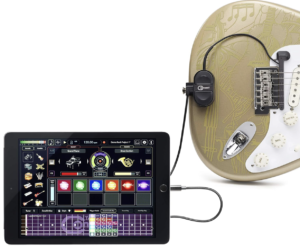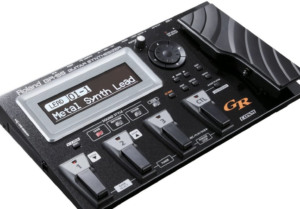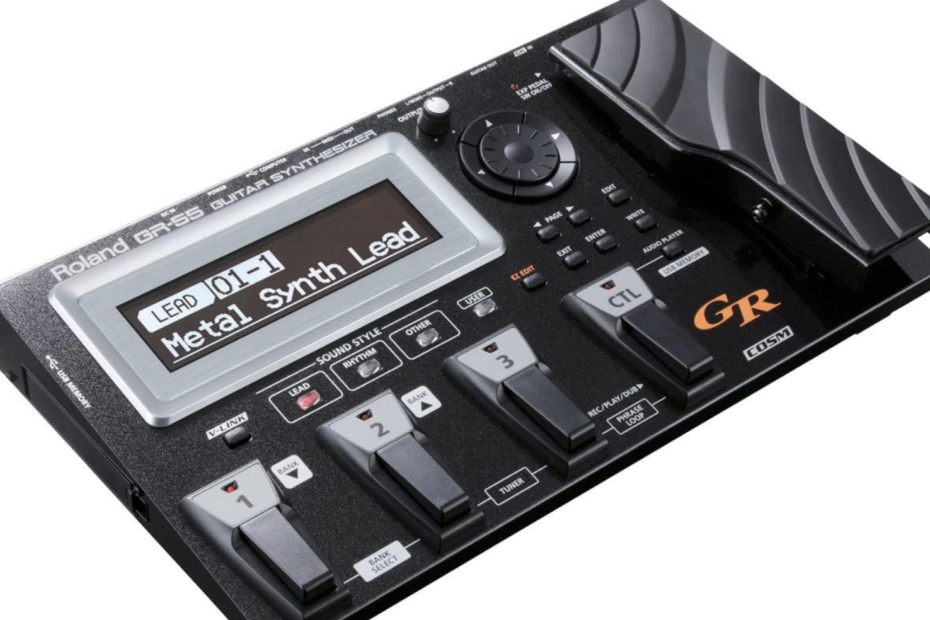We discuss best MIDI guitar in the market. A MIDI guitar is a musical instrument that combines the traditional features of a guitar with the ability to produce MIDI (Musical Instrument Digital Interface) data.
Unlike a standard electric or acoustic guitar, a MIDI guitar typically includes additional technology to capture and transmit information about the notes played on the guitar strings.
This MIDI data can then be used to trigger synthesizers, virtual instruments, or other MIDI-compatible devices.
Here are some notable MIDI guitars that have gained recognition for their features and capabilities.
Fishman TriplePlay
 The Fishman TriplePlay is a wireless MIDI guitar controller system that allows guitarists to transform their traditional electric or acoustic guitars into powerful MIDI instruments.
The Fishman TriplePlay is a wireless MIDI guitar controller system that allows guitarists to transform their traditional electric or acoustic guitars into powerful MIDI instruments.
It enables players to access a wide range of virtual instruments, synthesizers, and other MIDI-compatible sound sources using their guitar as the controller. Here are some key features and details about the Fishman TriplePlay:
The TriplePlay system includes a hexaphonic pickup that is mounted on the guitar, picking up the individual signals from each string. This allows for accurate tracking of the notes played on the guitar.
One of the notable features of the TriplePlay is its wireless connectivity. The system communicates wirelessly with a USB receiver, which can be connected to a computer or MIDI hardware. This eliminates the need for cables running from the guitar to the controller, providing freedom of movement on stage or in the studio.
The TriplePlay system comes bundled with comprehensive software that facilitates MIDI control and sound generation. The software includes a virtual instrument library, allowing users to access a variety of sounds, from realistic guitar tones to synthesizers and orchestral instruments.
Installing the TriplePlay system on a guitar is designed to be user-friendly. The hexaphonic pickup is typically mounted on the guitar’s body, and the wireless transmitter can be connected to the guitar’s output jack.
Guitar Synthesis: With the TriplePlay, guitarists can explore guitar synthesis, triggering a range of MIDI sounds beyond what traditional guitars can produce. This opens up creative possibilities for experimenting with different instruments and textures.
Users can create and save custom presets, allowing them to switch between different sounds and settings easily during performances or studio sessions.
Also Read:
10 Best Semi-Hollow Body Guitars
10 Best Flanger Guitar Pedals for 2024
The 15 Best Cutaway Guitars for 2024
Enya NOVA Go SP1 Carbon Fiber Acoustic Electric Guitar
MXR Clone Looper Guitar Effects Pedal: Review
MOOER SD30i Intelligent Guitar Amp Review
MIDI Editing and Recording: The TriplePlay software provides tools for MIDI editing and recording. This enables users to fine-tune their MIDI performances and capture their musical ideas directly into a DAW (Digital Audio Workstation).
The wireless nature of the TriplePlay makes it suitable for live performances. Guitarists can move freely on stage without being tethered by cables, making it a versatile tool for performing artists.
The TriplePlay is compatible with a variety of DAWs and virtual instruments, making it a versatile choice for musicians working in different software environments.
Fishman periodically releases software updates and expansions for the TriplePlay system, introducing new features, sounds, and improvements. Users can stay up-to-date with the latest offerings.
Roland GR-55
 The Roland GR-55 is a guitar synthesizer and effects processor that allows guitarists to access a vast array of realistic instrument sounds and synthesized tones by converting the guitar’s signal into MIDI (Musical Instrument Digital Interface) data. It’s part of Roland’s GR series, known for its pioneering work in guitar synthesis technology. Here are the key features and details about the Roland GR-55:
The Roland GR-55 is a guitar synthesizer and effects processor that allows guitarists to access a vast array of realistic instrument sounds and synthesized tones by converting the guitar’s signal into MIDI (Musical Instrument Digital Interface) data. It’s part of Roland’s GR series, known for its pioneering work in guitar synthesis technology. Here are the key features and details about the Roland GR-55:
Guitar Synthesis: The GR-55 is primarily designed for guitarists who want to expand their sonic palette. It uses a divided pickup system to capture the individual signals from each guitar string, allowing for accurate tracking of notes and chords.
The heart of the GR-55 is its advanced PCM (Pulse Code Modulation) synthesis engine, capable of reproducing a wide range of instrument sounds, including realistic guitar tones, pianos, brass, strings, synthesizers, and more.
The GR-55 features Roland’s COSM technology, which is known for its realistic modeling of acoustic and electric instrument sounds. This technology contributes to the authentic and responsive feel of the synthesized tones.
The pedal is equipped with two independent sound engines, allowing users to blend and layer different tones. This flexibility enables creative combinations, such as blending a synthesized pad with a guitar sound.
Guitar Effects Processing: In addition to synthesis capabilities, the GR-55 serves as a powerful effects processor for guitar. It includes a wide range of built-in effects such as distortions, modulations, delays, reverbs, and more.
The GR-55 has USB connectivity, enabling direct connection to a computer for MIDI communication, software editing, and recording. It can be used as a MIDI controller for virtual instruments in a DAW (Digital Audio Workstation).
This processor includes a phrase loop function that allows users to record and loop guitar phrases in real-time. This feature is useful for creating layered soundscapes during live performances or for practice.
The EZ Edit feature simplifies the process of tweaking and customizing sounds. The GR-55 also comes with an extensive sound library, providing a variety of preset tones for different musical styles.
Floor Pedal Compatibility: The GR-55 is often used in conjunction with Roland’s GK-3 divided pickup, which can be mounted on compatible guitars. Additionally, the GR-55 can be integrated with floor-based foot controllers for hands-free operation during live performances.
The pedal is suitable for live performances due to its dual sound engines, wide range of tones, and real-time control options. Guitarists can switch between different patches and sounds seamlessly.
Roland has released firmware updates and additional sound libraries to expand the capabilities of the GR-55 over time. Users can check for the latest updates on Roland’s official website.
Other MIDI Guitars
- Yamaha’s EZ-AG
- Yamaha’s EZ-AG is an entry-level MIDI guitar designed for ease of use. It has built-in features to help beginners learn to play, and it can also be used as a MIDI controller.
- Jammy MIDI Guitar:
- The Jammy is a portable MIDI guitar with a telescopic neck, making it compact for travel. It has built-in sounds and can also be used as a MIDI controller with DAWs and software.
- You Rock Guitar MIDI Controller:
- The You Rock Guitar is a MIDI controller that emulates the feel of a guitar while offering MIDI functionality. It’s suitable for players looking for a familiar guitar-like experience with MIDI capabilities.
- MIDI Stratocaster-style Guitars (Various Brands):
- Several companies offer MIDI controller guitars designed in the style of traditional Stratocasters. These guitars often feature built-in MIDI technology for connecting to synthesizers and other MIDI devices.
- Godin LGXT MIDI Guitar:
- Godin’s LGXT is an electric guitar with MIDI capabilities. It features a synth access pickup and a 13-pin output for connecting to MIDI devices.
- Ibanez RGKP6 Kaoss Guitar:
- The Ibanez RGKP6 is a unique MIDI guitar that incorporates a Korg Kaoss Pad for real-time effects manipulation. It combines traditional electric guitar elements with innovative MIDI control.
- Parker MIDI Fly:
- Parker Guitars has produced MIDI-compatible versions of their Fly series guitars. These guitars are known for their lightweight design and high-quality construction.
- MIDI Retrofits (e.g., Graphtech Ghost System):
- Some players choose to retrofit their existing guitars with MIDI pickup systems like the Graphtech Ghost System. These systems can be installed on various guitar models for MIDI functionality.
- Line 6 Variax Guitar Series:
- Line 6’s Variax series includes guitars with built-in digital technology that allows for various alternate tunings and guitar model simulations. While not exclusively MIDI, these guitars offer a versatile range of sounds.
- ROLI Seaboard RISE:
- The ROLI Seaboard RISE is not a guitar, but it’s worth mentioning as an innovative MIDI controller with a piano-style keyboard that allows for expressive and unique control over MIDI parameters.
- Sensel Morph with Buchla Thunder Overlay:
- While not a traditional guitar, the Sensel Morph, when paired with a MIDI overlay like the Buchla Thunder, offers a highly expressive touch-sensitive surface that can be used for MIDI control, including guitar-like playing techniques.
- Jamstik Studio MIDI Guitar:
- The Jamstik Studio is a MIDI guitar that incorporates a hexaphonic MIDI pickup. It provides wireless MIDI connectivity and is designed for both professional musicians and beginners.
